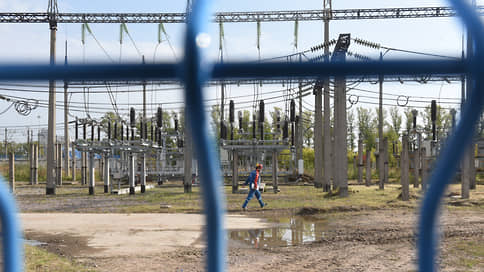Rosseti proposes to limit the costs of distribution networks from 2024
[ad_1]

According to Kommersant, Rosseti proposes to limit the maximum unit operating costs of distribution grid companies at the level of the largest grid organization (TGO) in the region from 2024. This, according to the company, will help eliminate tariff imbalances between regional TGOs and subsidiaries of Rosseti, and the total effect of such a measure for the state-owned company will be 13 billion rubles. in year. According to experts, such a limitation on operating costs cannot be considered economically justified: it is acceptable to focus on at least the three largest distribution network companies in the region.
Rosseti expects to accelerate the implementation of “reference” tariffs for distribution grid companies by limiting the maximum value of unit operating costs at the level of the largest TGO in the region starting in 2024. The head of Rosseti, Andrei Ryumin, sent this proposal “to eliminate existing tariff imbalances” and “at the first stage as a transitional measure” to President Vladimir Putin in a letter dated August 23 (available to Kommersant). The President put the visa “I agree”, redirecting it to Deputy Prime Minister Alexander Novak.
“Reference” tariffs are a new principle of long-term regulation in power grids. Its essence is to create a reference benchmark for operating expenses (OPEX) based on many criteria with subsequent annual indexation for distribution network companies (former IDGCs) Rosseti and independent TSOs (manage distribution networks that are regional, municipal or privately owned). The government has been exploring the possibility of introducing a new reference OPEX method for distribution networks from July 1, 2026. The energy market already has experience with the introduction of “standards” in energy supply companies, where the method has been used since mid-2018 to “average” the margin of guaranteeing suppliers.
Now tariffs for energy transmission in different regions can differ several times, and electrical networks that are municipal or regional property often receive a tariff per unit of equipment several times higher than in distribution networks controlled by Rosseti, Andrei Ryumin points out in a letter.
The Ministry of Energy told Kommersant that they are considering this proposal and, according to preliminary estimates, overall OPEX may decrease as a result. They noted that the issue concerns tariff regulation and is within the competence of the FAS. The Kommersant service did not answer. The Community of Energy Consumers believes that “this intraspecific struggle will make sense for consumers if it leads to lower tariffs.”
Rosseti confirmed to Kommersant that the letter had been sent. The company estimated the economic effect of the measure at 13 billion rubles. per year – these funds will be used either to reduce NUTS, or to carry out repairs and reconstruction of networks, the costs of which are currently not included in the tariff.
Rosseti believes that it is necessary to limit the “reference” OPEX at the level of the largest TSO in the region without a transition period, but they refer to the position of the FAS, according to which the transition should be gradual. “It is important for us that the issue is resolved and cases are excluded when network companies in one region have a significant difference in specific operating costs,” they explain. The company cites North Ossetia as an example, where the State Unitary Enterprise Alaniyaenergoset has OPEX per unit of equipment of 111.24 thousand rubles. against 32.61 thousand rubles. at the branch of Rosseti Northern Caucasus – Sevkavkazenergo. In the Kemerovo region, Energoparitet LLC has an indicator of 98.65 thousand rubles. versus 25.88 thousand rubles. at the branch of Rosseti Sibir – Kuzbassenergo-RES.
Since the proposed approach is based on the fact that the level of expenses of the largest TGO is the most justified, then it is the largest TGO that is not threatened with a reduction in NUTS, notes Sergei Sasim, director of the Center for Research in the Electric Power Industry of the National Research University Higher School of Economics. At the same time, other companies whose specific OPEX is at a higher level may lose funds to pay labor and carry out routine repairs, he adds. In his opinion, limiting OPEX based on the specific value established for the largest TCO is difficult to consider economically justified. “In the practice of tariff regulation, such an indicator is not used. A higher level of unit costs may be due to objective factors: different composition of equipment, differences in the volume of such equipment and the structure and number of TSO personnel,” he says. According to the expert, a more acceptable indicator is needed: the average for the three largest TGOs or those whose share of the “boiler” is more than 10%, or even for all TGOs in the region.
[ad_2]
Source link





